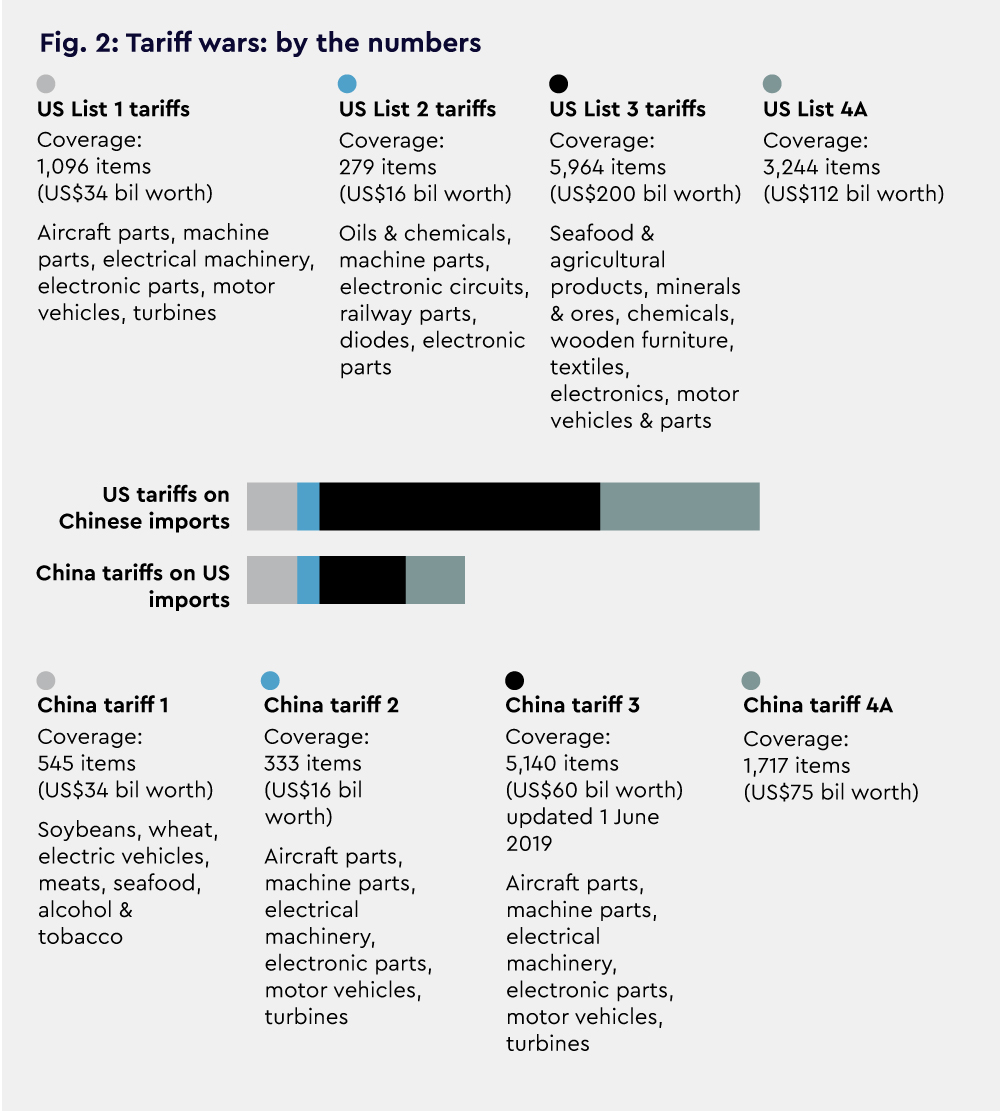US-China Trade Tensions: Key Impacts On The Asia Summit

Table of Contents
Economic Fallout and Regional Uncertainty
The ripple effects of the US-China trade war are profoundly impacting Asian economies, creating uncertainty and hindering growth. The disruption extends beyond the two major players, affecting supply chains, investment flows, and overall economic prospects across the Asia-Pacific region. This economic uncertainty is a central theme expected to dominate discussions at the Asia Summit.
-
Disruption of global supply chains impacting manufacturing hubs in Southeast Asia: Many Asian nations, particularly those in Southeast Asia, serve as crucial links in global manufacturing supply chains. The trade war has led to significant disruptions, with increased costs, delays, and uncertainty impacting businesses reliant on these networks. This has forced companies to re-evaluate their sourcing strategies and potentially relocate manufacturing facilities, altering the economic landscape of the region.
-
Reduced foreign direct investment (FDI) in the region due to uncertainty: The ongoing trade conflict has created a climate of uncertainty, discouraging foreign direct investment in the region. Investors are hesitant to commit capital in an environment marked by fluctuating tariffs, unpredictable trade policies, and geopolitical risks. This reduction in FDI is hindering economic growth and development across several Asian nations.
-
Slowdown in economic growth across several Asian nations: The combined effects of supply chain disruptions and reduced FDI have resulted in a slowdown in economic growth across multiple Asian countries. The International Monetary Fund (IMF) and other organizations have already revised their growth forecasts downwards for several Asian economies, highlighting the severity of the impact. Understanding this economic slowdown is crucial to addressing the challenges during the Asia Summit.
-
Increased volatility in Asian stock markets: The trade war's uncertainty has created significant volatility in Asian stock markets. Investor sentiment is highly sensitive to developments in the US-China trade relationship, leading to fluctuations that impact businesses and consumer confidence. This financial instability further compounds the economic challenges facing the region. Analyzing this volatility is key to understanding the overall impact of US-China trade tensions.
Geopolitical Shifting Alliances and Regional Security
The US-China trade war is not merely an economic issue; it’s fundamentally reshaping the geopolitical landscape of Asia. Asian nations are increasingly pressured to re-evaluate their relationships with both the US and China, leading to complex strategic recalibrations. This shift in alliances will be a significant focus at the Asia Summit.
-
Increased pressure on nations to choose sides between the US and China: The intensifying rivalry between the US and China is forcing many Asian nations into a difficult position, requiring them to choose sides or navigate a complex balancing act. This pressure impacts not only economic relations but also security partnerships and strategic alignments.
-
Potential for increased regional military tensions: The economic conflict is intertwined with broader geopolitical competition, increasing the risk of military tensions in the region. Increased naval activities, cyber warfare, and disputes over territorial claims could escalate, creating a more unstable security environment.
-
Heightened competition for influence in the region: The US and China are engaged in a fierce competition for influence in Asia, using economic incentives, diplomatic pressure, and even military capabilities to secure favorable partnerships. This struggle for dominance adds another layer of complexity to the regional dynamics.
-
Formation of new strategic partnerships among Asian nations: In response to the US-China tensions, some Asian nations are forging closer partnerships to mitigate risks and enhance their collective bargaining power. This could lead to the formation of new regional alliances and trade agreements, reducing dependence on either the US or China. Discussions about these new partnerships are expected to play a large role in the Asia Summit.
The Asia Summit Agenda: Trade, Technology, and Security
The US-China trade war is dominating the agenda of the Asia Summit, shaping discussions on trade, technology, and regional security. Leaders will need to find ways to navigate these challenges and collaborate to mitigate the negative consequences.
-
Focus on mitigating the economic impact of US-China trade tensions: A major focus of the summit will be on strategies to reduce the economic fallout from the trade war. This may involve exploring diversification of supply chains, promoting regional trade agreements, and seeking mechanisms for de-escalation.
-
Discussions on technology transfer and intellectual property rights: The trade war has highlighted concerns about technology transfer and intellectual property rights. The summit will likely see discussions on how to establish fair and transparent rules governing technological innovation and trade.
-
Enhanced cooperation on regional security issues: Given the potential for increased regional military tensions, enhanced cooperation on security issues will be crucial. This may involve strengthening existing security partnerships or exploring new mechanisms for conflict resolution and crisis management.
-
Potential for new regional trade agreements to reduce reliance on the US and China: The trade war is pushing Asian nations to consider alternative trade partnerships to lessen their dependence on the US and China. This could lead to the formation of new regional trade agreements, designed to foster greater economic integration and stability within the region.
Focus on Specific Countries
Countries like Japan and South Korea, deeply integrated into global supply chains with both the US and China, face particularly complex challenges. Vietnam, a major manufacturing hub, is also experiencing significant pressure. The Asia Summit will provide a platform to address these country-specific concerns and discuss tailored solutions.
Conclusion
The US-China trade tensions are undeniably shaping the landscape of the Asia Summit, creating both significant challenges and opportunities for the region. The summit's success hinges on addressing the economic fallout, navigating the shifting geopolitical landscape, and fostering collaborative solutions to shared concerns. To stay informed on the evolving impact of US-China trade tensions on the Asia Summit and the broader Asian economy, continue following reputable news sources and analytical reports. Understanding these trade tensions is crucial for navigating the complexities of the Asian economic and geopolitical landscape.

Featured Posts
-
 Victor Osimhens Two Goals Power Galatasaray Past Sivasspor
May 27, 2025
Victor Osimhens Two Goals Power Galatasaray Past Sivasspor
May 27, 2025 -
 Mob Land Episode 9 Release Date And Time Your Guide To Watching Tom Hardys Series
May 27, 2025
Mob Land Episode 9 Release Date And Time Your Guide To Watching Tom Hardys Series
May 27, 2025 -
 The One Legacy Character Deserving A Return In The Next Alien Movie After Romulus
May 27, 2025
The One Legacy Character Deserving A Return In The Next Alien Movie After Romulus
May 27, 2025 -
 Eminems Untold Story The Gwen Stefani Lyric And What It Really Means
May 27, 2025
Eminems Untold Story The Gwen Stefani Lyric And What It Really Means
May 27, 2025 -
 The Challenges Of Establishing Trumps Space Force Addressing Missile Shortages And Satellite Capabilities
May 27, 2025
The Challenges Of Establishing Trumps Space Force Addressing Missile Shortages And Satellite Capabilities
May 27, 2025
